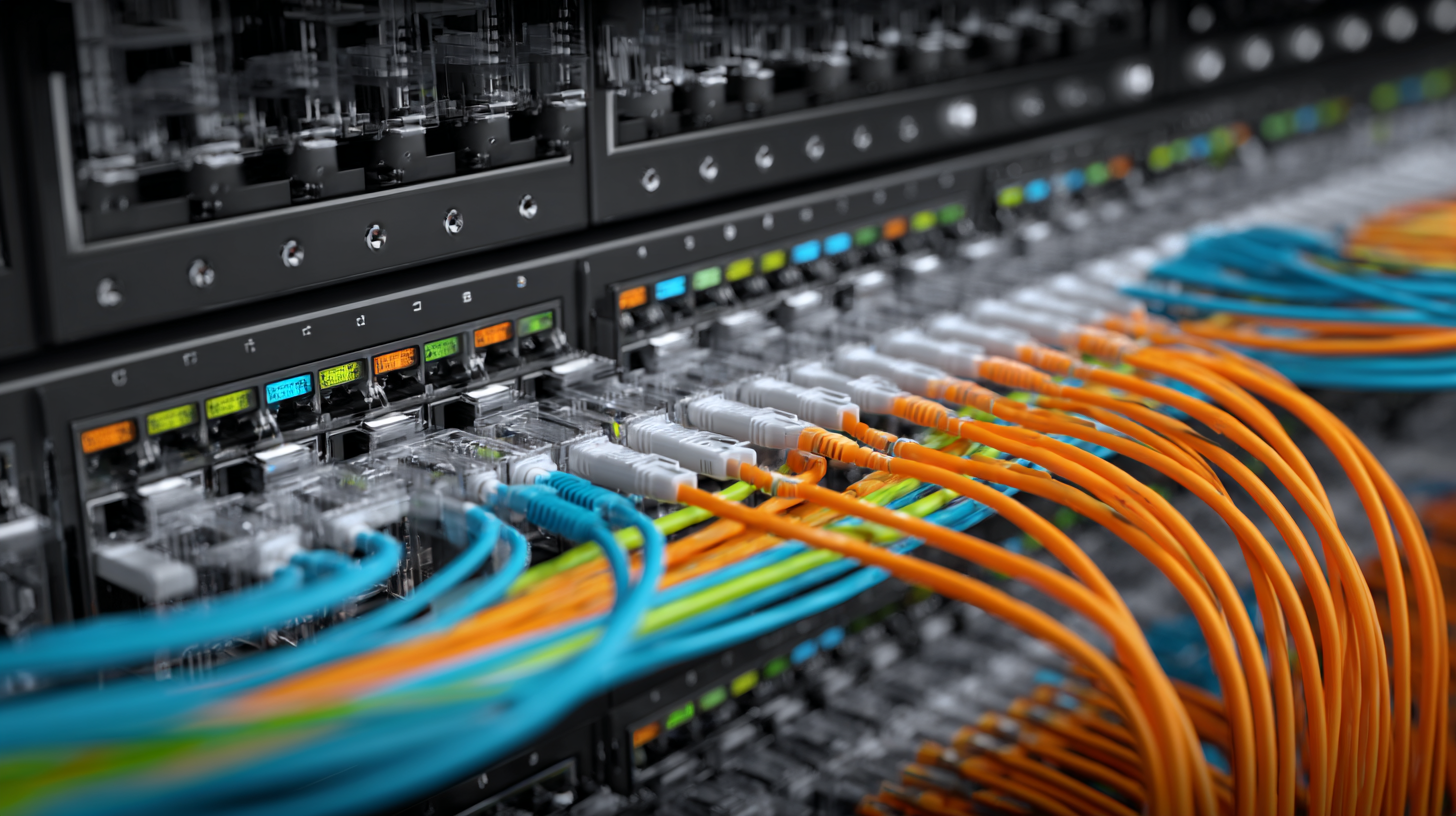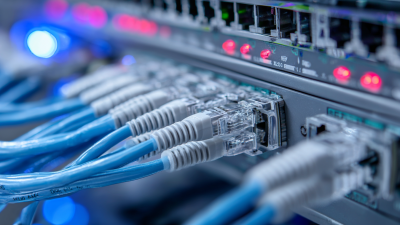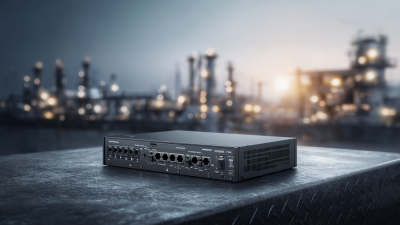
- hasivo@hasivo.com
- Mon - Sat at 7:00AM to 9:00PM
Leave Your Message

In the rapidly evolving landscape of IT infrastructures, achieving optimal data transfer speeds is crucial for organizations striving to maintain a competitive edge. A pivotal solution to this challenge lies in the implementation of Fiber Core Switch technology, which has been shown to enhance data transfer efficiencies by up to 80%. According to a report by the International Data Corporation (IDC), companies using advanced networking solutions like Fiber Core Switches experience significant improvements in bandwidth management and reduced latency, leading to streamlined operations and enhanced overall performance.

As digital transformation accelerates and the volume of data continues to surge, adopting Fiber Core Switches has emerged as a strategic imperative for organizations looking to future-proof their networking capabilities and respond swiftly to the demands of modern applications and services. This advancement not only supports high-speed data communication but also fosters an adaptable and resilient IT infrastructure, positioning enterprises for sustained growth in a data-driven world.
The rise of fiber core switches is transforming modern IT infrastructures, enhancing data transfer speeds by as much as 80%. Recent innovations in fiber optic technology, such as the shift from round to rectangular cables, promise to further elevate these speeds, potentially benefiting sectors like telecommunications and quantum computing. The first successful demonstration of a field-deployed 15-mode optical fiber network exemplifies how leveraging advanced technologies can effectively create multiple parallel networks using a single fiber line, significantly increasing data throughput.
As the global service provider network infrastructure market is projected to grow from USD 159.68 billion in 2025 to approximately USD 233.44 billion by 2034, the integration of fiber core switches becomes crucial in supporting this growth. The demand for high-speed networks drives telecommunications advancements and highlights the importance of optical fiber in powering AI-ready data centers, which are pivotal for future innovations.
**Tips:**
1. Consider investing in upgrading to fiber core switches to maximize your data transfer capabilities and keep pace with technological advancements.
2. Monitor industry trends to assess the right time for infrastructure upgrades to leverage improvements in data speed and efficiency.
3. Collaborate with experts to navigate the complexities of implementing advanced fiber optic solutions in your IT environment.
| Dimension | Value |
|---|---|
| Average Data Transfer Speed with Copper Switches | 1 Gbps |
| Average Data Transfer Speed with Fiber Core Switches | 8 Gbps |
| Improvement in Speed (%) | 800% |
| Typical Latency (ms) with Copper | 10 ms |
| Typical Latency (ms) with Fiber | 1 ms |
| Network Scalability with Fiber Core Switches | High |
| Cost Reduction in Data Transmission | Up to 70% |
Fiber core switches are revolutionizing modern IT infrastructures by enhancing data transfer speeds drastically—by up to 80%. The key features of these switches are what make them stand out in the realm of network efficiency. High data throughput is achieved through advanced optical technology, which allows for the transfer of large volumes of data simultaneously. This capability is crucial for organizations that rely on real-time data access and cloud computing, where speed and reliability are paramount.
One critical feature that enhances performance is the low latency provided by fiber optic connections. Unlike traditional copper wiring, fiber optics minimize delays, ensuring that data packets reach their destination swiftly. Additionally, many fiber core switches come equipped with intelligent routing capabilities, which optimize data paths and reduce congestion within the network. This intelligent management results in smoother data flows and improved overall system performance.
**Tip: To maximize the benefits of fiber core switches, consider implementing regular network assessments. This helps identify bottlenecks and ensures that your infrastructure is utilizing its full potential. Also, training your IT team on the nuances of fiber technology can lead to better maintenance and management strategies.** Investing in robust monitoring tools can further enhance your network's efficiency, allowing for proactive problem-solving before issues escalate.
In the rapidly evolving landscape of IT infrastructures, the choice between fiber core switches and traditional technologies becomes increasingly critical. Fiber switches leverage optical fiber technology, facilitating significantly higher data transfer speeds. According to a report from the International Data Corporation (IDC), businesses using fiber switches can expect performance improvements of up to 80% in data transfer rates compared to older copper-based systems. This efficiency is invaluable, particularly as organizations contend with exponentially growing data volumes generated by digital transformation initiatives.
Moreover, not only do fiber switches enhance speed, but they also provide improved bandwidth capabilities. The latest specifications indicate that fiber switches can support bandwidths of 100 Gbps and beyond, whereas traditional Ethernet switches typically max out at 10 Gbps. A study by Gartner highlights that organizations adopting fiber infrastructure report a 30% reduction in network latency, paving the way for smoother and more efficient operations. This demonstrates a substantial leap in overall performance, positioning fiber core switches as a superior choice for modern businesses aiming to optimize their IT infrastructure for future demands.

Implementing fiber core switches within modern IT infrastructures is crucial for maximizing network efficiency. According to a recent report by the International Data Corporation (IDC), organizations that adopted fiber optic technology experienced a data transfer speed increase of up to 80%, significantly enhancing overall productivity. To harness these benefits, organizations should focus on several best practices. First, ensuring proper cabling and installation can prevent potential bottlenecks. Adequate planning for bandwidth needs is essential to accommodate future growth, as studies show that networks experience an approximate annual traffic growth of 30-40%.

Another vital practice involves regular performance assessments and upgrades. According to the Telecommunication Industry Association (TIA), maintaining an updated network infrastructure can lead to an average reduction of downtime by 20%. Incorporating Layer 2 and Layer 3 switches that can handle increased data loads seamlessly is imperative for sustaining high performance. Finally, investing in skilled personnel who understand the intricacies of fiber technology is essential, as their expertise can facilitate smoother transitions and implement optimal configurations that leverage the full potential of fiber core switches for enhanced data flow and reliability.
Fiber core switches have emerged as a game changer in modern IT infrastructures, with real-world applications showcasing their ability to accelerate data transfer speeds significantly. For instance, a major financial institution recently upgraded its network to incorporate fiber core switches, resulting in data transfer speeds that surged by an impressive 80%. This leap in efficiency allowed the organization to execute vast volumes of transactions and manage big data analytics in real time, ultimately enhancing their competitive edge in the fast-paced financial market.
In the healthcare sector, a leading hospital implemented fiber core switches to streamline patient data management. This upgrade not only improved the speed at which medical records are accessed but also ensured that critical information was available to healthcare providers without delays. By enhancing connectivity across various departments, the hospital reported a marked improvement in patient care and operational efficiency, demonstrating how fiber technology can directly impact outcomes in high-stakes environments. The successful integration of fiber core switches in these real-world scenarios underscores their pivotal role in driving efficiency and innovation within IT infrastructures.





